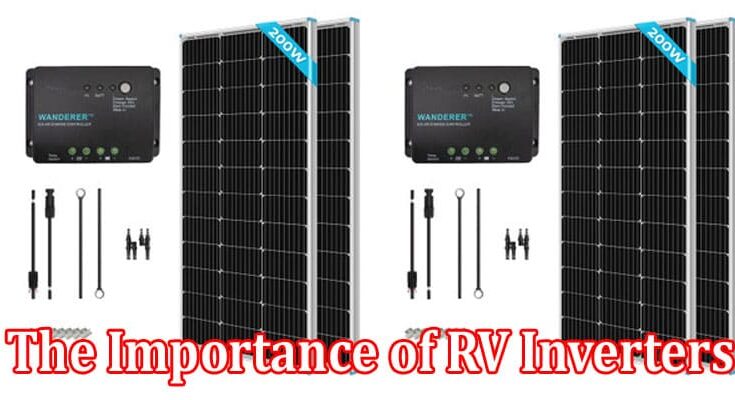This device is used to transform the 12v direct current coming from the battery into 220v alternating current.
What does an inverter do? The operation of the inverter is quite simple, connect it with two terminals to the service battery (or for smaller ones to the cigarette lighter socket), turn it on, and you’re done. You have a socket like the one at home to attach what you need.
Again we have two options:
- Modified wave inverter
- pure sine wave inverter
MODIFIED SINE WAVE INVERTER
This type of inverter is the most common on the market and is also the cheapest.
This is because it uses a simpler (digital signals) and cheaper (material level) method to transform 12v direct current into 220v alternating current. However, the resulting wave of the current is not perfect, as in the case of the pure wave, but squared.
Without going into details, the important thing to know is that the wave produced is not “as good” as that produced by the pure sine wave inverter. You will then be able to connect some equipment but not all, precisely because of the non-linear wave it produces.
For example, equipment that uses energy to operate an internal motor, such as a drill, hairdryer, etc., does not work. If they do, they risk getting damaged. In contrast, appliances such as PCs, chargers, TVs, etc., are designed and tested with a pure wave so they can ruin a long time.
The value of the modified wave inverter is certainly a very low price, which is why it is widespread and used.
Pure sine wave inverter
This type of inverter delivers an alternating current of 220V 50Hz in the form of a pure sine wave, like that of the house.
The work this device does is a little different and more complex than the modified wave one, so it is more expensive.
Unlike the modified wave one, this inverter can charge and operate any equipment without the risk of damaging it because the wave of the output current is the same as the one we have in our homes.
You will then have to evaluate how much you will use the inverter. Do you intend to use it only in an emergency, or do you need to recharge your PC often and connect the refrigerator? In the latter case, I recommend investing in a pure sine wave inverter.
By now, you will know that, at this point, it is time for formulas!
In addition to differentiating between pure and modified waves, the inverters also differ in power delivered (Watt).
What power to choose for the inverter?
Whatever inverter you decide to buy, evaluate the power it must have based on the equipment you need to connect simultaneously and the energy peaks that these may require when switched on.
Some appliances, such as refrigerators, when they are switched on, have an absorption peak of a fraction of a second, much greater (even double) than what they then have during normal operation.
To check the power you need, check the watts each piece of equipment uses (indicated in the instruction booklet or on a label).
If you know that you will use the inverter to charge the PC, the phone, and little else, a 300-watt inverter is enough.
If, on the other hand, you need to connect many devices or some that absorb a lot, you will need a larger one.
Always remember that your energy tank (the service battery) is not unlimited like at home! So if you buy a 3000w power inverter and use a hairdryer, you will have drained your tank in a short time. The power of the inverter (and its use) must be proportionate to the size of the battery.
Know that the inverter, even if not connected to any equipment, has an absorption of 0.3-1Ah, so it consumes energy once turned on. It is always better to turn it off when you are not using it because it can draw up to 24A per day for nothing (1Ah x 24 hours = 24A).
Conclusions
As I have already mentioned, it all depends on your needs.
The inverter is not an essential accessory: if all your appliances work with a 12v socket, you don’t need it.
It is always convenient to have a 220v socket available for any eventuality.
To decide between the two categories, you will need to consider whether you intend to use it constantly for a certain type of appliance or if it is an emergency socket that you will rarely use.
ELECTRICAL CABLES
You will need suitable electrical cables to make the various connections between the different equipment. Especially with direct current, it is important not to under-size them. Otherwise, there is a risk that they will overheat or even catch fire.
Remember that the cable works like a resistance: the longer it is, the more resistance it has, especially if it is undersized.
For this reason, it is always better to put a fuse on the cable to avoid damage (I will discuss fuses in the next paragraph).
Be careful:
- You don’t mess with electricity, so be careful when connecting the cables.
- The negative does not necessarily have to go back to the battery: to save cable, you can connect it to a mass, which in our case is the chassis of the van (make sure, however, that there is no paint where you attach it but that it is in contact with the bare metal).
FUSES
A fuse is an electrical device that protects a circuit from overcurrents.
Put. A safety system cuts off the current flow when the cable is crossed by too much current in an instant (which would cause the cable to melt).
To avoid unpleasant surprises, it is advisable to insert a fuse suitable for the current (A) flowing through it on each cable.
How to choose the right fuse
To calculate the current (A) flowing through the cable, use the formula:
Current (Ampere) = Power (Watt) / Voltage (Volt)
Take an example:
If you have a lamp that works at 5Watt
7Watt / 12Volt (which is your battery voltage) = 0.58A
Since there may be current peaks when you turn on the appliance (the light bulb in the case of the example), you must take a fuse that is at least 25% larger than the value you have obtained.
Taking up the data of the example:
0.58A (the current you calculated earlier) * 1.25 (i.e. 25% more) = 0.72A
You will therefore have to insert a 0.71 A fuse, or better, one of the nearest larger sizes, such as 1A (in fact, there are no fuses of all sizes).
Great news, we have completed the electrical system!
Now you have to put everything into practice, install your electrical system and leave for new adventures!
We are not electricians, and all our work comes from a long search for information on the web and books.
However, there may be some errors, so if you have found something wrong, write us, and we will correct the information or add it to improve this article for future users.
If you are inexperienced and feel insecure, I recommend contacting a professional in the sector or an experienced friend to carry out any work or get the best advice.

Caroline is a dedicated writer with a passion for keeping readers informed. Specializing in providing the latest news updates and unbiased reviews, she strives to deliver accurate and insightful content. With a keen eye for detail and a commitment to journalistic integrity, Caroline ensures that her readers are always well-informed. Stay tuned for her latest articles to stay up-to-date on current events and trends.




